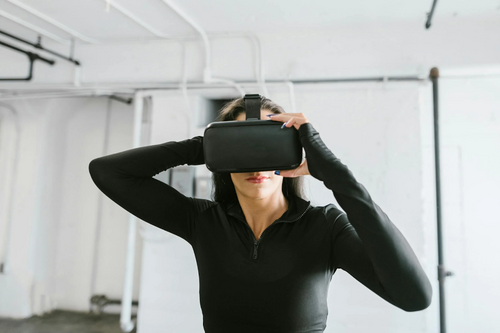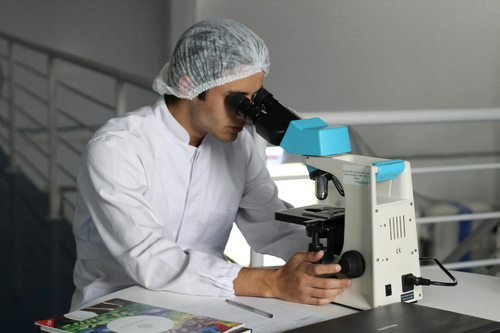
12 Nov How Technology Revolutionizes Modern Research Facilities
Technological progress is swiftly changing numerous fields, including scientific research. The use of advanced tools and systems in labs is revolutionizing operations, enhancing accuracy, and opening up previously unthinkable possibilities. These technologies help labs make faster discoveries and achieve scientific breakthroughs. From biotechnology to data security and automation, these advancements are paving the way for researchers to delve deeper, produce results faster, and operate with greater accuracy.
As labs evolve, their tools and techniques redefine the boundaries of research. Technology is now a core part of the scientific process in labs, significantly speeding up discoveries. This continual technological progression in research facilities underscores the importance of innovation in modern science, making difficult tasks easier and leading to new scientific insights.
Single-Cell Sorters and Precision in Cell Line Development
One area where technology has made a substantial impact is in the development and sorting of single cells for research purposes. Traditional cell sorting methods lacked the precision and efficiency that today’s single-cell sorters bring. Modern single-cell sorters allow researchers to isolate and examine individual cells, making it possible to target and study cellular functions with a degree of specificity that was previously unattainable. This precision proves invaluable for scientists working on cell line development, an area critical in the creation of biotherapeutics and other innovative healthcare solutions.
Automated single-cell sorting technology speeds up the process and increases the reliability of outcomes, ensuring each cell selected meets stringent criteria for further study and use. By employing advanced single-cell sorters, research facilities can generate clonally derived cell lines more efficiently, which is essential in fields such as gene editing, immunology, and biopharmaceutical research.
This shift represents a new era for cellular biology, where researchers can confidently conduct experiments on cells they know have been carefully and accurately selected, ultimately driving forward projects that require pure, specialized cell lines for meaningful results. As researchers continue to prioritize cell line development, this technology sets the stage for further progress in medical and genetic research.
Blockchain and Enhanced Data Security in Research Labs
Data security is critical, especially when dealing with confidential or unique information. Blockchain technology offers a strong, decentralized security system that reduces the risk of unauthorized access or data alterations. Using blockchain, research labs can ensure their data is accessed only by authorized personnel and that any changes to the data are traceably recorded.
Moreover, as multiple research facilities or networks often collaborate on projects, seamless data transfer is crucial. Laboratories using different blockchain systems can benefit from the Inter-Blockchain Communication (IBC) protocol, which facilitates secure data sharing between networks. This protocol enables these facilities to exchange information safely, enhancing collaboration while protecting sensitive data.
Understanding how IBC works can be transformative for labs looking to enhance interoperability without compromising security. Blockchain’s introduction into research settings helps establish a dependable and tamper-proof foundation for data storage, ultimately reinforcing confidence in shared research efforts across different institutions.
AI-Driven Data Analysis for Faster Insights
Artificial intelligence is transforming how data is analyzed in research environments, reshaping the way large datasets are studied and understood. In fields like genomics, drug discovery, and epidemiology, where important insights are often hidden deep within vast data troves, processing information quickly is crucial. AI tools can analyze data up to a thousand times faster than human researchers, providing quicker and more precise interpretations that aid in drawing conclusions and making decisions.
Moreover, AI enhances processing speeds and reduces mistakes caused by human oversight. It handles monotonous, data-heavy tasks, allowing researchers to concentrate on more intricate analyses. As machine learning models are trained with more data, their predictive accuracy improves. This capability enables research institutions to break free from the constraints of conventional data analysis, paving the way for pioneering projects and more progressive methods in scientific investigation.
Robotic Automation for Efficient Laboratory Operations
In the drive to optimize productivity, research facilities increasingly rely on robotic automation to handle routine laboratory tasks. These robots, designed to perform specific procedures with remarkable precision, have reshaped the way scientists operate within lab environments. Automation is especially useful for tasks such as pipetting, sample handling, and reagent mixing, activities that, while necessary, consume a significant portion of lab time and often risk human error.
Robotic automation not only boosts efficiency but also improves consistency and repeatability in research. By automating high-precision tasks, labs can ensure that procedures are carried out exactly the same way every time, minimizing variations that might skew results. For research facilities under strict time constraints or those managing high sample volumes, robotics transform lab workflows. The time saved from these automated processes allows scientists to focus on more complex, intellectually demanding aspects of their projects, helping accelerate scientific progress.
3D Printing and Customization in Lab Equipment and Models
The application of 3D printing in research facilities adds a new layer of adaptability, enabling laboratories to design and produce custom lab equipment and models on demand. 3D printing technology allows researchers to fabricate specific tools or equipment components tailored to unique research requirements, significantly reducing costs and production times. When standard equipment doesn’t meet the specific needs of a project, 3D printing offers a versatile and efficient alternative.
3D printing is also proving invaluable in the creation of biological models, allowing researchers to build detailed, accurate representations of tissues or organs. These models are instrumental in testing and experimentation, offering an alternative to live subjects and enhancing understanding of complex biological systems. By giving labs the power to design equipment and models suited to their specific needs, 3D printing opens up endless customization possibilities, fostering a more adaptive and innovative research environment.
Cloud-Based Platforms for Collaborative Research
The adoption of cloud technology has simplified how researchers collaborate, allowing them to work together easily, no matter where they are. These platforms provide secure and easy access to data and findings, helping scientists share updates instantly, speed up their projects, and coordinate more effectively.
Cloud platforms also help labs handle large data sets by offering scalable storage solutions that aren’t limited by local hardware. This flexibility is particularly beneficial for research facilities handling massive datasets or needing frequent access to historical data. Cloud platforms make it easier for teams to work together by improving how they communicate and manage data. This helps with research that spans different fields and countries.
Augmented Reality (AR) for Interactive Training and Visualization
Augmented reality is changing how training is done in research facilities by making learning more hands-on and engaging, which helps people understand and remember better. AR lets labs create realistic simulations of complex procedures, so researchers and trainees can practice without the risks of a real lab. This technology also aids in visualizing molecular structures and lab setups, helping researchers understand intricate details more intuitively.
AR’s ability to merge digital information with the physical world has significant implications for molecular biology, chemistry, and other fields where spatial awareness and precision are paramount. In addition to training, AR tools can enhance live experimentation by overlaying relevant data and instructions directly within a researcher’s field of view. By making training and visualization more engaging, AR helps labs foster a skilled, well-prepared workforce that can navigate complex scientific tasks with confidence.
Embracing Technology for the Future of Research
Technology’s influence on research facilities is undeniable, driving efficiency, enhancing precision, and opening avenues for unprecedented exploration. As advancements like single-cell sorters, blockchain, AI, and automation continue to evolve, research facilities stand poised to make faster and more impactful discoveries. By integrating these tools, labs not only optimize their operations but also strengthen the foundation for future breakthroughs.
In embracing technology, research facilities position themselves at the forefront of scientific progress. These innovations empower researchers to push beyond traditional constraints, achieving outcomes once limited by the scope of their tools. As we look ahead, the synergy between science and technology promises a future where labs will continue to innovate, discover, and drive transformative changes in fields that shape human understanding and well-being.
—————
The information on MedicalResearch.com is provided for educational purposes only, and is in no way intended to diagnose, cure, or treat any medical or other condition.
Some links are sponsored. Products, providers and suppliers are not warranted or endorsed.
Always seek the advice of your physician or other qualified health and ask your doctor any questions you may have regarding a medical condition. In addition to all other limitations and disclaimers in this agreement, service provider and its third party providers disclaim any liability or loss in connection with the content provided on this website.
Last Updated on November 12, 2024 by Marie Benz MD FAAD

